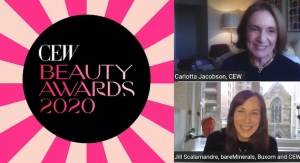06.10.15
The trend toward scents from the food and natural worlds continued in popular scents in the U.S. home fragrances market, which hit another year of record high growth in 2014. Accounting for over 50% of total market sales, the luxury segment continues to drive this market, shedding light on the healthy growth behind several home fragrance categories, according to Kline’s Home Fragrances: U.S. Market Analysis and Opportunities report.
While mass-market candles sales slowed, sales of luxury candles doubled in growth in 2014. Bath & Body Works is one of the largest and fastest growing brands among prestige candles, but smaller brands, such as Nest, RibbonWick, and Dyptique, are the ones fueling the market with strong, double-digit growth and standing out through distinctive, decorative visuals and high tech identity.
“Home fragrance has been a part of home décor since the 1990s when the sales of candles peaked,” said Sagar Gehra, senior consultant at Kline. “Nowadays the esthetic appeal and home décor value continue to be important facets that help marketers stand out and drive product sales across all channels be it prestige or mass. What also helps sell products is creative and giftable packaging ideas that allow consumers to experience the scent while on shelf.”
Active diffusers are also becoming more popular, while passive diffusers are giving way to power-operated devices. The ease of a switch, with no risk of spill or burn, modern designs, and new continuous-release technology promising long-lasting fragrance delivery is a turning point behind this migration.
The majority of mass marketers registered a decline in 2014, with some exceptions. The segment experiences high positive growth within the home fragrance oils, wax melts, and fragrance lamps category as the continued expansion of wax melts in mass merchandisers leads to strong growth for the category as a whole. Large players, such as S.C. Johnson with its brand Glade, Procter & Gamble with Febreze, and Reckitt Benckiser through its Air Wick brand, enter the category in late 2013 and 2014.
A noticeable trend in 2014 is that outdoor scents are preferred as indoor fragrances. Medium-sized candles sold the best in 2014, and masculine scents continue to be a growing trend.
While mass-market candles sales slowed, sales of luxury candles doubled in growth in 2014. Bath & Body Works is one of the largest and fastest growing brands among prestige candles, but smaller brands, such as Nest, RibbonWick, and Dyptique, are the ones fueling the market with strong, double-digit growth and standing out through distinctive, decorative visuals and high tech identity.
“Home fragrance has been a part of home décor since the 1990s when the sales of candles peaked,” said Sagar Gehra, senior consultant at Kline. “Nowadays the esthetic appeal and home décor value continue to be important facets that help marketers stand out and drive product sales across all channels be it prestige or mass. What also helps sell products is creative and giftable packaging ideas that allow consumers to experience the scent while on shelf.”
Active diffusers are also becoming more popular, while passive diffusers are giving way to power-operated devices. The ease of a switch, with no risk of spill or burn, modern designs, and new continuous-release technology promising long-lasting fragrance delivery is a turning point behind this migration.
The majority of mass marketers registered a decline in 2014, with some exceptions. The segment experiences high positive growth within the home fragrance oils, wax melts, and fragrance lamps category as the continued expansion of wax melts in mass merchandisers leads to strong growth for the category as a whole. Large players, such as S.C. Johnson with its brand Glade, Procter & Gamble with Febreze, and Reckitt Benckiser through its Air Wick brand, enter the category in late 2013 and 2014.
A noticeable trend in 2014 is that outdoor scents are preferred as indoor fragrances. Medium-sized candles sold the best in 2014, and masculine scents continue to be a growing trend.





















